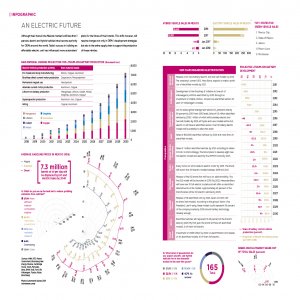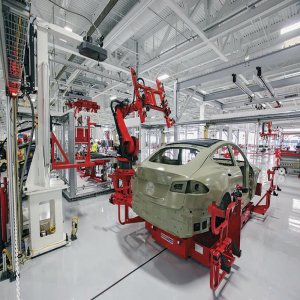No Stopping Brake Component Supplier’s Growth

STORY INLINE POST
Q: What is Mexico’s role in Brembo’s global operations?
A: Brembo’s business in Mexico has grown substantially over the past five years, which has enabled us to remain close to our customers and to stay competitive throughout North America. In Mexico and the US, Brembo is focused on ramping up its facilities, ensuring that the company’s best manufacturing practices are implemented quickly and that all our customers’ programs are launched flawlessly. We have operated for over three decades in Mexico and are impressed with the level of commitment and general attitude of our associates in the country. Brembo has hired and developed in Mexico a world-class level of talent that has and will continue contributing to Brembo’s success.
Q: What opportunities does Brembo see from premium vehicle brands starting assembly operations in Mexico?
A: Brembo’s braking systems are standard equipment in many premium vehicles around the world and we strive to remain close to customers both in the development and manufacturing phases of a product. As premium OEMs establish production facilities here in Mexico, Brembo will be ready to produce and supply brake components from our new manufacturing facilities in Escobedo and our recently expanded disc-machining plant in Apodaca. Our first priority is to be located near our customers so we can provide a fast and reliable service and eliminate high transportation costs. Brembo’s components are heavy and sometimes delicate because they rust in high humidity, so the company places great importance on location.
Q: How has the Mexican aftermarket responded to Brembo’s braking solutions?
A: Brembo has been producing brake components in Mexico for over three decades. Many vehicles in the country employ our components and we offer replacement parts that meet original equipment specifications. Our aftermarket family of products is available for purchase through Mexico’s wholesale, retail and e-commerce sales channels. We also have expanded our distribution network and retail outlet network in Mexico to make it easier for consumers to acquire Brembo’s replacements while also improving our online presence in North America due to growing sales of Internet-based aftermarket purchases.
Q: What is Brembo’s strategy to introduce its technology to the volume market?
A: Our growth has been driven primarily by the introduction of our products into mainstream automotive markets to the point that volume cars are now fitted with Brembo brakes. This has prompted us to employ the best manufacturing processes to ensure a supply of top-quality brake systems at the high volumes that our customers require. Our foundry operations in Mexico and the US are state-of-the-art facilities that use the latest in high-volume manufacturing processes and quality control and our machining and assembly operations use creative automation and process control technologies. We have taken all of the best practices that we have developed in our facilities around the world and implemented them there.
In cases such as the Chevrolet Corvette, Brembo not only supplies the brake components but also assembles the complete corner of the vehicle and delivers it to the customer’s final assembly plant. If our client is building a black car equipped with a yellow Brembo caliper, we will be notified about it hours before so that we deliver that vehicle’s brake system at the exact moment that that car is close to rolling off the assembly line thanks to our just-in-time deliveries. This system helps both Brembo and its customer eliminate idle inventory in the manufacturing process.
Q: How feasible is it to integrate sports-grade components such as carbide-ceramic disks into mass-production models?
A: The carbon ceramic manufacturing process is time and resource-intensive, so these components carry a higher price over similar, traditional components such as cast-iron parts. This means these types of brake components are reserved primarily for high-performance vehicles sold at premium prices such as the Acura NSX, Ford GT or Chevrolet Corvette. Having said that, the price premium of these components has decreased over the past years thanks to Brembo’s manufacturing processes becoming more efficient.
Drivers who have carbide-ceramic brake systems in their vehicles notice a superior brake performance since they can take a large amount of heat for an extended period of time without deformation or loss of actuation compared to cast-iron systems.
Q: How has the introduction of lightweight and mixed-material solutions impacted your manufacturing and testing process?
A: The introduction of new lightweight materials is a trend that Brembo has explored since its foundation and Brembo has pioneered their introduction into brake systems. We invest over 5 percent of our annual turnover in R&D operations and have 10 percent of our technical workforce devoted to technological development. The company is always looking to the future of braking, most recently pioneering brake-by-wire (BBW) technology and experimenting with new materials such as cement brake pads. We are perfecting a BBW system that eliminates the need for brake fluids. The expansion of the electronic parking brake system is gaining a foothold in the volume vehicle market. These systems are standard equipment in most supercars and are becoming more popular in the mid-premium and performance segments.
Q: What challenges have you found in integrating electronics to your products while maintaining the same weight and performance?
A: As with any new technology, our customers and consumers should feel comfortable with a new system in their vehicles. This is particularly true when it comes to brakes because they are a safety component. We believe that implementation of BBW systems coupled with mechatronic actuation is the future of brake systems and will provide a faster, more reliable and fully customizable braking system. This technology should be lighter than existing brake systems because the hydraulics and brake fluid lines in the vehicle will be eliminated.
The spherical tire technology driven by magnetic levitation is interesting for us. It poses challenges for brakes systems that Brembo is working to overcome through new technologies.
Q: What is Brembo’s strategy to stand out in the global brake system market?
A: Design is what differentiates Brembo from most suppliers in the market. The combination of functionality and design has driven Brembo’s success. Just producing a brake part was never the goal for us. Brembo develops and designs brake components that provide maximum stopping power with style. Our components not only stop super-cars but we also contribute to the exciting look of those cars with a stylized brake system that lends itself to the unique design theme of each vehicle. Brembo designs its braking components to both perform and stand out. The last time we counted, Brembo’s caliper color palate included over 100 different colors.
Q: What are your goals regarding sustainability and a more environmentally friendly operation?
A: In 2017, Brembo established a dedicated environment and energy department with the specific aim of defining the company’s strategies in this area, such as the steady reduction of its plants’ environmental impact. We also provided more than 195,000 hours of training on environment, health, safety and compliance in 2017. Brembo continues to invest in projects to reduce energy consumption and emissions, minimize industrial waste and improve waste reuse and recycling. We have been recognized as one of the top companies worldwide committed to reducing the causes of climate change by the Carbon Disclosure Project and were included on the “A List” of the Climate Change program with particular reference to CO2 emissions.
Q: How does Brembo plan to increase its operations both in original equipment and the aftermarket?
A: North America is Brembo’s largest market with a turnover above US$600 million and this growth is attributable to Brembo’s expansion to seven production facilities that support the North American vehicle market. The region’s projected production of 17 million vehicles in 2018 in addition to the growing aftermarket should ensure Brembo’s continued strength. We continue to ensure that not only OEMs but also consumers have access to our products by establishing partnerships with new customers such as Canadian Tire and AutoZone.
























